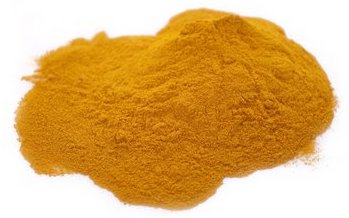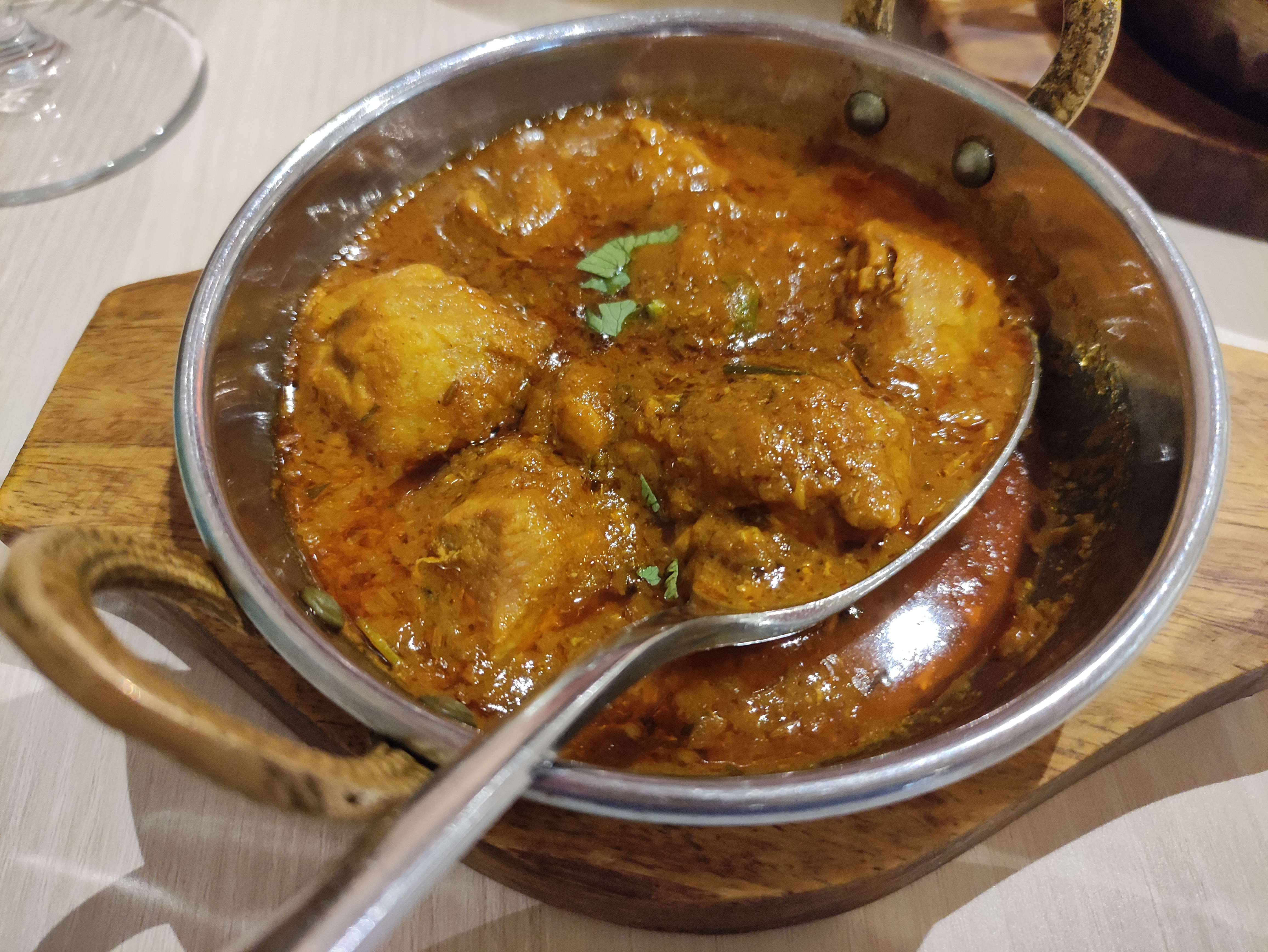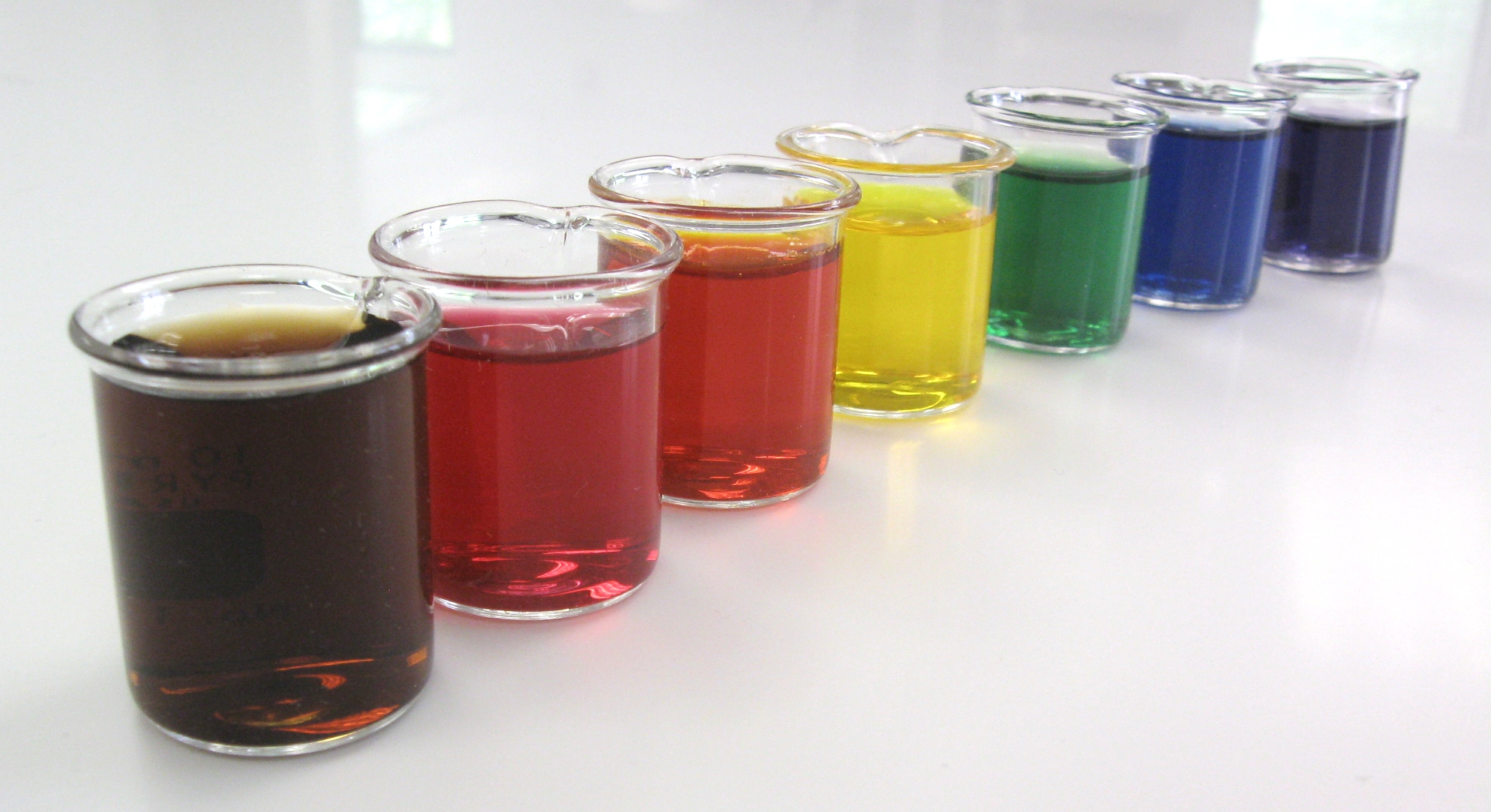|
Turmeric
Turmeric (), or ''Curcuma longa'' (), is a flowering plant in the ginger family Zingiberaceae. It is a perennial, rhizomatous, herbaceous plant native to the Indian subcontinent and Southeast Asia that requires temperatures between and high annual rainfall to thrive. Plants are gathered each year for their rhizomes, some for propagation in the following season and some for consumption or dyeing. The rhizomes can be used fresh, but they are often boiled in water and dried, after which they are ground into a deep orange-yellow shelf-stable spice powder commonly used as a coloring and flavoring agent in many Asian cuisines, especially for curries ( curry powder). Turmeric powder has a warm, bitter, black pepper-like flavor and earthy, mustard-like aroma. Although long used in Ayurvedic medicine, there is no high-quality clinical evidence that consuming turmeric or the principal turmeric constituent, curcumin, is effective for treating any disease. Curcumin, a bright ye ... [...More Info...] [...Related Items...] OR: [Wikipedia] [Google] [Baidu] |
Curcumin
Curcumin is a bright yellow chemical produced by plants of the ''Curcuma longa'' species. It is the principal curcuminoid of turmeric (''Curcuma longa''), a member of the ginger family, Zingiberaceae. It is sold as a herbal supplement, cosmetics ingredient, food flavoring, and food coloring. Chemically, curcumin is a polyphenol, more particularly a diarylheptanoid, belonging to the group of curcuminoids, which are natural phenol, phenolic pigments responsible for the yellow color of turmeric. Laboratory and clinical research have not confirmed any medical use for curcumin. It is difficult to study because it is both unstable and poorly bioavailable. It is unlikely to produce useful leads for drug development as a lead compound. History Curcumin was named in 1815 when Henri Auguste Vogel and Pierre Joseph Pelletier reported the first isolation of a "yellow coloring-matter" from the rhizomes of turmeric. Later, it was found to be a mixture of resin and turmeric oil. In 1910, Mi ... [...More Info...] [...Related Items...] OR: [Wikipedia] [Google] [Baidu] |
Curry
Curry is a dish with a sauce or gravy seasoned with spices, mainly derived from the interchange of Indian cuisine with European taste in food, starting with the Portuguese, followed by the Dutch and British, and then thoroughly internationalised. Many dishes that would be described as curries in English are found in the native cuisines of countries in Southeast Asia and East Asia. The English word is derived indirectly from some combination of Dravidian words. A first step in the creation of curry was the arrival in India of spicy hot chili peppers, along with other ingredients such as tomatoes and potatoes, part of the Columbian exchange of plants between the Old World and the New World. During the British Raj, Anglo-Indian cuisine developed, leading to Hannah Glasse's 18th century recipe for "currey the India way" in England. Curry was then spread in the 19th century by indentured Indian sugar workers to the Caribbean, and by British traders to Japan. Further exchange ... [...More Info...] [...Related Items...] OR: [Wikipedia] [Google] [Baidu] |
Ginger
Ginger (''Zingiber officinale'') is a flowering plant whose rhizome, ginger root or ginger, is widely used as a spice and a folk medicine. It is an herbaceous perennial that grows annual pseudostems (false stems made of the rolled bases of leaves) about one meter tall, bearing narrow leaf blades. The inflorescences bear flowers having pale yellow petals with purple edges, and arise directly from the rhizome on separate shoot (botany), shoots. Ginger is in the family (taxonomy), family Zingiberaceae, which also includes turmeric (''Curcuma longa''), cardamom (''Elettaria cardamomum''), and galangal. Ginger originated in Maritime Southeast Asia and was likely domesticated first by the Austronesian peoples. It was transported with them throughout the Indo-Pacific during the Austronesian expansion ( Before Present, BP), reaching as far as Hawaii. Ginger is one of the first spices to have been exported from Asia, arriving in Europe with the spice trade, and was used by ancient Gre ... [...More Info...] [...Related Items...] OR: [Wikipedia] [Google] [Baidu] |
Curcuma
''Curcuma'' () is a genus of plants in the ginger family Zingiberaceae that contains such species as turmeric and Siam tulip. They are native to Southeast Asia, southern China, the Indian Subcontinent, New Guinea and northern Australia. Some species are reportedly naturalized in other warm parts of the world such as tropical Africa, Central America, Florida, and various islands of the Pacific, Indian and Atlantic Oceans. Generally, most curcuma grows well in loose and sandy soil in shaded areas. Botanical description Curcuma is a perennial, herbaceous plant that can reach a height of 1 meter. It emits numerous, edible rhizomes whose interiors are yellow or orange. These rhizomes are reduced to a powder, which is the spice called curcuma. Its lanceolate leaves are oblong or elliptical and are of a uniform green, and about 50cm long and 7 to 25 cm wide. Uses The name is derived from the Sanskrit ''kuṅkuma'', referring to turmeric. Turmeric is used to flavour or colour curry ... [...More Info...] [...Related Items...] OR: [Wikipedia] [Google] [Baidu] |
Rhizomatous
In botany and dendrology, a rhizome ( ) is a modified subterranean plant stem that sends out roots and shoots from its nodes. Rhizomes are also called creeping rootstalks or just rootstalks. Rhizomes develop from axillary buds and grow horizontally. The rhizome also retains the ability to allow new shoots to grow upwards. A rhizome is the main stem of the plant that runs typically underground and horizontally to the soil surface. Rhizomes have nodes and internodes and auxiliary buds. Roots do not have nodes and internodes and have a root cap terminating their ends. In general, rhizomes have short internodes, send out roots from the bottom of the nodes, and generate new upward-growing shoots from the top of the nodes. A stolon is similar to a rhizome, but stolon sprouts from an existing stem having long internodes and generating new shoots at the ends, they are often also called runners such as in the strawberry plant. A stem tuber is a thickened part of a rhizome or sto ... [...More Info...] [...Related Items...] OR: [Wikipedia] [Google] [Baidu] |
Curry Powder
Curry powder is a spice mix for curry originating from the Indian subcontinent, adapted from but not to be confused with the native spice mix of garam masala. History As commercially available in Western markets, curry powder is comparable to the traditional Indian spice mixture known as ''garam masala'' ('warm spices'). Conceived as a ready-made ingredient intended to replicate the flavor of an Indian sauce, it was first sold by Indian merchants to British traders. Curry powder was used as an ingredient in 18th-century British recipe books, and commercially available from the late 18th century, with brands such as Crosse & Blackwell and Sharwood's persisting to the present. In Australia, a common curry spice is Keen’s curry powder. The ingredient "curry powder", along with instructions on how to produce it, are also seen in 19th-century US and Australian cookbooks, and advertisements. British traders introduced the powder to Meiji Japan, in the mid-19th century, ... [...More Info...] [...Related Items...] OR: [Wikipedia] [Google] [Baidu] |
Rhizome
In botany and dendrology, a rhizome ( ) is a modified subterranean plant stem that sends out roots and Shoot (botany), shoots from its Node (botany), nodes. Rhizomes are also called creeping rootstalks or just rootstalks. Rhizomes develop from axillary buds and grow horizontally. The rhizome also retains the ability to allow new shoots to grow upwards. A rhizome is the main stem of the plant that runs typically underground and horizontally to the soil surface. Rhizomes have nodes and internodes and auxiliary buds. Roots do not have nodes and internodes and have a root cap terminating their ends. In general, rhizomes have short internodes, send out roots from the bottom of the nodes, and generate new upward-growing shoots from the top of the nodes. A stolon is similar to a rhizome, but stolon sprouts from an existing stem having long internodes and generating new shoots at the ends, they are often also called runners such as in the strawberry plant. A stem tuber is a thickene ... [...More Info...] [...Related Items...] OR: [Wikipedia] [Google] [Baidu] |
Zingiberaceae
Zingiberaceae () or the ginger family is a family of flowering plants made up of about 50 genera with a total of about 1600 known species of aromatic perennial herbs with creeping horizontal or tuberous rhizomes distributed throughout tropical Africa, Asia, and the Americas. Many of the family's species are important ornamental, spice In the culinary arts, a spice is any seed, fruit, root, Bark (botany), bark, or other plant substance in a form primarily used for flavoring or coloring food. Spices are distinguished from herbs, which are the leaves, flowers, or stems of pl ..., or medicinal plants. Ornamental genera include the shell gingers ('' Alpinia''), Siam or summer tulip ('' Curcuma alismatifolia''), '' Globba'', ginger lily ('' Hedychium''), '' Kaempferia'', torch-ginger '' Etlingera elatior'', '' Renealmia'', and ginger ('' Zingiber''). Spices include ginger ('' Zingiber''), galangal or Thai ginger ('' Alpinia galanga'' and others), melegueta pepper ('' Aframo ... [...More Info...] [...Related Items...] OR: [Wikipedia] [Google] [Baidu] |
Herb-induced Liver Injury
Herb-induced liver injury (HILI) is a form of drug-induced liver injury caused by herbal medicines, typically herbal supplements or herb-based ethnomedicines. Prevalence Herbs are a common component of ethnomedicines and their potential hepatotoxicity is a concern for people taking such medicines or other herbal supplements. Use of such products is widespread within Ayurvedic medicine. Although injury from ayurvedic medicines has commonly been blamed on improper adulteration of drugs, a number of preparations can be harmful though direct effects purely because of their herbal ingredients. Implicated products * '' Tinospora cordifolia'' supplement usage is of concern as the constituent chemicals cause hepatitis. Advocates of ayurveda have attempted to blame adulteration for these effects but investigation has shown the toxicity to result directly from the medicine itself. Supplement use can lead to death or the need for a liver transplant. * Herbal supplements of '' Cullen c ... [...More Info...] [...Related Items...] OR: [Wikipedia] [Google] [Baidu] |
Food Coloring
Food coloring, color additive or colorant is any dye, pigment, or substance that imparts color when it is added to food or beverages. Colorants can be supplied as liquids, powders, gels, or pastes. Food coloring is commonly used in commercial products and in domestic cooking. Food colorants are also used in various non-food applications, including cosmetics, pharmaceuticals, home craft projects, and medical devices. Some colorings may be natural, such as with carotenoids and anthocyanins extracted from plants or cochineal from insects, or may be synthesized, such as tartrazine yellow. In the manufacturing of foods, beverages and cosmetics, the safety of colorants is under constant scientific review and certification by national regulatory agencies, such as the European Food Safety Authority (EFSA) and US Food and Drug Administration (FDA), and by international reviewers, such as the Joint FAO/WHO Expert Committee on Food Additives. Purpose of food coloring People asso ... [...More Info...] [...Related Items...] OR: [Wikipedia] [Google] [Baidu] |
National Center For Complementary And Integrative Health
The National Center for Complementary and Integrative Health (NCCIH) is a United States government agency which explores complementary and alternative medicine (CAM). It was created in 1991 as the Office of Alternative Medicine (OAM), and renamed the National Center for Complementary and Alternative Medicine (NCCAM) before receiving its current name in 2014. NCCIH is one of the 27 institutes and centers that make up the National Institutes of Health (NIH) within the United States Department of Health and Human Services. NCCIH has been criticized for funding and marketing pseudoscientific medicine. Organization and history Overview The Office of Alternative Medicine (OAM) was established in October 1991 by the United States Congress. The OAM was expanded from an office into a center and renamed the National Center for Complementary and Alternative Medicine (NCCAM) in October 1998. It is one of several centers within the National Institutes of Health (NIH). The founding ... [...More Info...] [...Related Items...] OR: [Wikipedia] [Google] [Baidu] |







